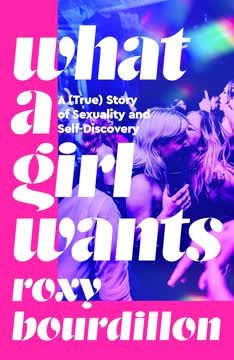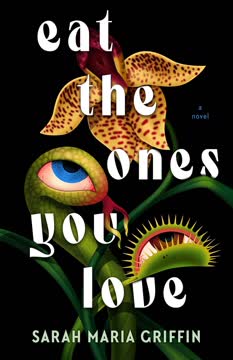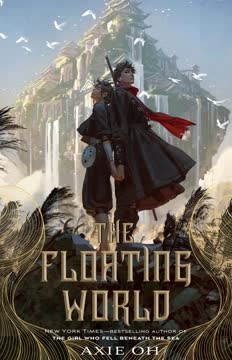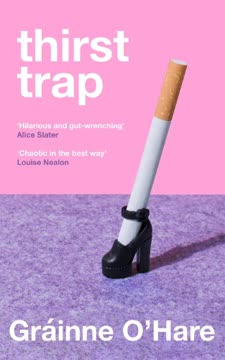Key Takeaways
1. The Genesis of a People-Pleaser
This is how I learn to shape-shift for the benefit of others. It is where my desperate need to please and keep the peace stems from.
Childhood influences. Growing up amidst her parents' "desperately, catastrophically unhappy" marriage, the author felt immense pressure to manage their pain and maintain peace. This environment fostered a deep-seated people-pleasing tendency, where she learned to adapt her behavior to soothe others and avoid conflict. Her grandparents' loving, stable home in York served as a crucial sanctuary, offering a stark contrast to her chaotic family life.
Shame and performance. From a young age, the author felt a dichotomy within herself: part shy girl, part show-off. She simultaneously feared and craved attention, often performing to entertain her father or achieve high marks to please her mother. This constant striving for approval, coupled with the shame of perceived imperfections, reinforced her belief that her worth was tied to making others happy, a pattern that would persist into adulthood.
Societal reinforcement. This people-pleasing inclination was further cemented by societal expectations for women and girls. The author notes that many women are socialized to prioritize others' happiness, keep the peace, and be "good girls." This conditioning, combined with her family dynamics, created a powerful internal drive to suppress parts of herself to be palatable and accepted.
2. Navigating a Heteronormative World
Compulsory heterosexuality is a powerful overlord. Plus, it’s the late nineties and we are tits-deep in Section 28, the poisonous Tory law banning teachers from the ‘promotion of homosexuality’.
Secret desires. As a thirteen-year-old, the author's "sapphic signs" were evident, from crushes on strong women like Jet from Gladiators to playing with Barbie dolls in "scissor" scenarios. Despite these clear inclinations, she didn't come out, even to herself, for a decade. This delay was largely due to the pervasive "compulsory heterosexuality" of the late nineties and the oppressive Section 28.
Societal pressures. The author's experience was shaped by a culture that assumed everyone was straight and actively suppressed any alternative.
- Her "massive titty committee" status led to assumptions of her being "up for it" and "gagging for a fella."
- She was branded "frigid" for not wanting to kiss boys, yet "slutty" for her appearance.
- Homophobia was openly expressed, making her reluctant to reveal her true self.
Early "experiments." Her first kiss with a girl, Cassie, was "the most exciting thing that has ever happened," a secret world of "dry-humping" and "unbridled giggling fits." Yet, they never discussed their feelings, maintaining plausible deniability. Her first kiss with a boy, on an escalator, was "dull," confirming a lack of genuine interest, but she continued to try to fit in.
3. The L Word and Lesbian Awakening
The L Word is a portal to a parallel universe. It offers this sense of possibility, a blueprint for a way of being that I couldn’t have fathomed before.
A new era of representation. Stealth-watching The L Word in her teenage bedroom was a "danger-wank" that profoundly impacted the author. The show, featuring "contemporary, free-range lesbians," offered a blueprint for a queer life she hadn't imagined. It made her feel "instantly less alone" and sparked an "undercover sapphic quest" for more information and connection.
Unrealistic expectations. The show, while groundbreaking, also created some "unrealistic expectations." Her first visit to a lesbian bar, Candy Bar, was intimidating and cliquey, not the "warm, welcoming embrace" she'd hoped for. This highlighted the gap between idealized media portrayals and the sometimes-awkward reality of finding community.
The internet's role. The L Word served as a "gateway to a whole new community," with online message boards and fan sites connecting "actual living, lezzing people" globally. This digital connection was crucial for the author, who, despite not commenting, realized "we are legion" and felt a sense of belonging she hadn't experienced before.
4. Coming Out: A Complex, Ongoing Journey
As queer folks know, coming out isn’t a one-time thing. There can be people you’re out to and people you aren’t.
Femme invisibility. The author's first attempt to come out to a stranger was met with disbelief: "No, you don't." This "femme invisibility"—the assumption that feminine women are straight—was a recurring frustration. Her appearance, with long hair and lipstick, provided "all the camouflage I needed," making her years of "painstakingly discreet" behavior seem pointless.
Family reactions. Coming out to her family was a fraught process:
- Cat (Whisky): Sweet and reassuring.
- Friends: Mostly unfazed, some admitting they "knew for a while."
- Father: Painfully awkward, leading to a forty-five-minute discussion about "climate change, carbonara," and sixteen years of avoiding "The Lesbian Stuff."
- Mother: Flipped, "That's fine. As long as you marry a man and have children first," and insisted she "didn't look like a lesbian."
- Granny: The kindest, accepting her and Robyn with warmth, though initially worried about safety and happiness.
Reclaiming the word. The word "lesbian" initially felt "big, scary," "clinical," and "an attack word." It was "shorthand for: 'You don't fit in. You have failed at femininity.'" Over time, through her work at DIVA, she reclaimed it, finding it "muscular and mighty," a "revolutionary act" to defy stereotypes and honor queer ancestors.
5. The Power and Pitfalls of First Love
I was willing to blow up my life to be with her, to come out to my family, to move to the other side of the planet, to be whatever she wanted me to be.
Intense connection. Meeting Robyn at a call center was an instant, electric connection. The author knew "she is gay and I really fancy her." Their romance was "fast-tracked and full on," leading to a move to Australia and a profound sense of being "hopelessly in love." This love was the catalyst for her coming out to her family, a monumental risk she took for "the unstoppable, dizzying, euphoric, slightly unhinged force of first true love."
Public challenges. As a visibly queer couple with Robyn's short hair and bare face, they faced "confusion, anger and sometimes vile homophobic abuse." Men often saw them as a "threesome" opportunity, demonstrating "male entitlement to female bodies" and a fundamental misunderstanding of lesbianism. This highlighted that "our relationships are seen as inherently less-than."
Self-suppression. Despite the love, the relationship became stifling. Robyn's dominant nature led the author to "shrink parts of me to try and please her," suppressing her "wildest, freest, most authentic part." She realized she was "hiding in it," putting her life and creative ambitions "on pause for six years" to remain "loveable" in Robyn's eyes, ultimately leading to incompatibility.
6. Reclaiming Self in Singledom
I don’t want to be a watered-down version of myself any more. I cannot reach my deathbed only to look back on my life and know that it has been half-lived.
The painful end. The author's six-year relationship with Robyn ended, leaving her "devastated" and "humiliated." The decision, made on the eve of her twenty-eighth birthday, was driven by the realization that she was "diminishing myself to try and keep hold of this lesbian love." The contrast between who she was with friends and who she was with Robyn served as her "compass," guiding her back to herself.
Grief and self-discovery. Living together post-breakup was an "intense" six-week vigil, filled with "sorrow, fear, doubt, nostalgia, desire." This period, marked by "incessant bawling" in public and private, forced her to confront her "people-pleasing, self-squashing routine" of almost three decades. She realized she needed to "preserve my relationship with myself."
Embracing independence. Moving into her own "flawed little flat" in London, a "glamorously cosy, femme-fabulous retreat," was a pivotal step. For the first time in a decade, she was "both single and out of the closet," a "thrilling and terrifying" experience. She found solace in decorating her space, rediscovering her passions, and realizing that "I don't have to be in a romantic relationship to be happy after all."
7. Body Image: A Queer Woman's Battle
I love women’s bodies, but can I love my own?
Lifelong struggle. From childhood, the author battled body image issues, teased for her size and subjected to "stinging comments from family members." The "nineties and noughties" were particularly toxic, with "diet culture and the glorification of extreme thinness" omnipresent. She desperately craved thinness, feeling "shame" for her "too-big body."
Queer beauty standards. Even within "Lesboland," the author found "an unattainable beauty standard"—"effortless, androgynous swagger with washboard abs." She felt she wasn't "lean or androgynous enough to qualify as a 'hot queer'," leading to a "double betrayal" of not fitting in her own community. This highlights that queer people are not "immune to all the body image bollocks."
Healing through desire. Her perspective began to shift when she started dating different women. Sleeping with a woman who had a body like hers was a "sexy revelation," helping her appreciate "how desirable a body like mine could be." She realized her attraction to women was diverse, and that "queer sex plugs us right into what we really want," becoming an act of "invention, rebellion, empowerment and, crucially, horniness."
8. The Queer Dating Scene: Lust, Laughter, and Lessons
I am not looking for love, but I am longing for lust. I want to feel something, and someone, new.
App adventures. After her breakup, the author embraced singledom, seeking "horny human connection" rather than love. She downloaded dating apps like Brenda, Tinder, and Her, but found them "not thriving." Experiences ranged from "mediocre chit-chat" to being catfished by "Katia," a fake profile set up by a "geezer."
Old-school charm. Gaydargirls.com, an "old-school dating website," offered more "intriguing" messages, though often niche:
- A nineteen-year-old wanting to call her "Mummy."
- A butch woman offering to be her "vintage daddy."
- An unsolicited "fanny flash" on her work computer.
These encounters, while not always leading to romance, were "amused, unoffended but definitely not aroused."
Real-life encounters. She found more success "face to face," enjoying a "bloody fantastic" one-night stand that was "less walk of shame, more stride of pride." Despite her "OTT flirting like a wanton hussy," she still faced interrogations to prove her queerness. Her fling with a "fucking fit" tattooed woman with a shaved head was "extraordinary," teaching her that "labels aren't always for life and topping a top is hot."
9. Grief, Love, and New Beginnings
It is a strange thing to be simultaneously mourning a profound loss and embarking on a new romance. Falling for someone while falling apart.
Profound loss. The author's beloved granny, her "safest, happiest place," fell ill. Holding her hand as she passed, the author delivered an "improvized This Is Your Life speech," recounting "all the highlights, all the glamour, all the good, lovely, warm things." This loss was "enduringly horrendous," feeling like "one of the Earth's tectonic plates has dropped out from under me," leaving her "irrevocably altered."
Unexpected connection. Amidst this grief, a new romance blossomed "quite by accident." Naomi, a woman who "loved red lipstick" and had sculpted a "sexy snowwoman" doppelganger of the author, messaged her on Gaydargirls. Their first date, marked by Naomi's nervousness and the author's accidental flashing, was electric, leading to a fast-tracked, exclusive relationship.
Healing through tenderness. Naomi's unwavering support during the author's "undignified" emotional meltdowns was transformative. She "held me as I heave with sobs," "listened while I spill out all my jumbled, dark, painful thoughts," and made her feel "safe to express all the pain I feel." This tenderness allowed the author to fall in love again, a "different love" that was "more grown-up," proving that "miraculously, there is more love in this world for me."
10. From Disillusionment to Purpose: A Queer Career
After a decade of struggling and applying and pitching in vain, of wondering if I’ll never make it in a creative career because ‘Who cares what some random dyke has to say?’ at last I have found a place that values my voice, as both a writer and a lesbian.
Career stagnation. Approaching thirty, the author felt "disillusioned" with a decade of "dead-end jobs" that made her "loathe myself." She questioned if being gay had "held me back" or if she was "simply not cut out for it." This professional despair, coupled with grief, led to a "breakdown," manifesting in physical symptoms like migraines and vertigo.
A pivotal shift. A homophobic incident at a "Diversity in The Workplace" training course, where the trainer expressed that he was "not ok with everything" (referring to gay people), was a breaking point. This blatant hypocrisy, combined with her mounting health issues, spurred her to quit her job and pursue her creative ambitions.
The DIVA opportunity. A job advert for an editorial assistant at DIVA, her "favourite lesbian magazine," appeared as a "gift from the gay gods." The rigorous application process, including a social media video and a column on "killing all the lesbian characters on TV," culminated in an interview. Getting the job was a "soaringly happy" moment, a "ticket to a life I have been chasing for so long," finally valuing her voice as a writer and a lesbian.
11. Pride, Protest, and the Power of Community
Pride is what we do to prove to ourselves and everyone else that we are not alone. Pride is the medicine we take to soothe away the torment of a lifetime spent being othered.
Mardi Gras magic. The author's first Pride parade in Sydney was a "salve for the soul," a "defiant explosion of joy" where "queer people are the majority." Witnessing "Dykes on Bikes" and diverse LGBTQIA marchers, she felt "utterly alive" and "galvanized by being part of a queer collective on a mission." This experience highlighted Pride as both a "party and a protest."
The fight for rights. Her participation in Australia's marriage equality campaign, marching and giving impassioned speeches, underscored the ongoing struggle for basic rights. The eventual legalization of same-sex marriage, while a victory, also brought "anger" at the "38 per cent who voted against," a stark reminder that "our rights are up for debate."
Community resilience. Despite the closure of many queer spaces like Candy Bar, the author remains "hopeful for the future of queer nightlife." She celebrates new inclusive venues and events, recognizing that "as queer people, we adapt, we regenerate and we find new ways to gather and form community." Her full-circle moment marching in Sydney Mardi Gras, now as editor-in-chief of DIVA, solidified her sense of belonging and purpose.
12. Embracing Authentic Selfhood
There is no right way to be queer. The whole point of being queer is to be your truest self, whatever that looks like.
Reclaiming glamour. After years of trying to fit in by adopting a more "casual style" and discarding her beloved vintage clothes, the author fully embraced her "inner high femme." She realized that her "love of traditional 'femininity' in no way diminishes my love of women," and that dressing for herself, not the "male gaze," was an act of "self-expression and lorryloads of fun."
Internal divisions. Working at DIVA revealed the "devastating" truth of divisions within the queer community, including "transphobia, the racism, the ableism, the biphobia." She advocates for "compassion, empathy and active allyship," urging queer people to "stand united" against patriarchal structures rather than "persecute others who have felt that pain too."
The power of stories. Her career at DIVA, interviewing "hundreds of remarkable creatives," reinforced the belief that "representation is magic. It changes lives. It even saves lives." By sharing diverse, nuanced, and intersectional stories, the queer community can heal, empower, and ensure that "we are not alone." The author's journey culminates in a profound self-acceptance, realizing that "it makes me proud" to double down on her queerness.
Last updated:
Review Summary
What a Girl Wants is a heartfelt, funny memoir exploring Roxy Bourdillon's journey of self-discovery and sexuality. Readers found it relatable, empowering, and nostalgic, particularly for LGBTQ+ millennials. The book covers topics like coming out, feminism, and cultural milestones, blending personal experiences with broader social context. Bourdillon's writing style is praised as warm and conversational, making readers feel like they're chatting with a friend. Many reviewers appreciated the honest portrayal of struggles and triumphs, as well as the book's inclusivity and its ability to balance humor with more serious topics.
Similar Books
Download PDF
Download EPUB
.epub digital book format is ideal for reading ebooks on phones, tablets, and e-readers.








